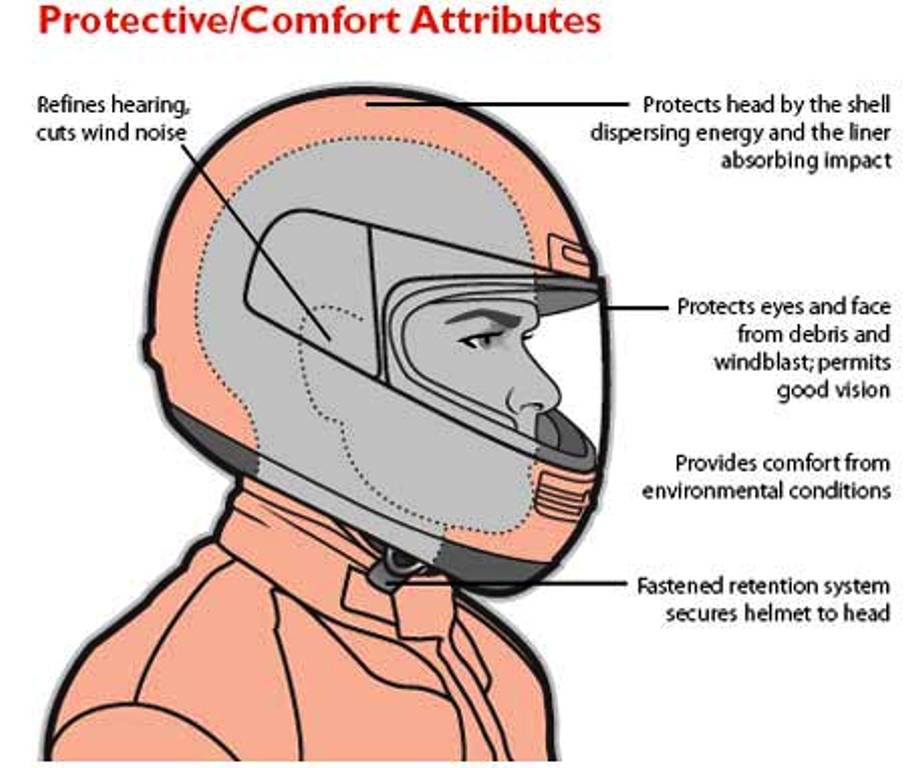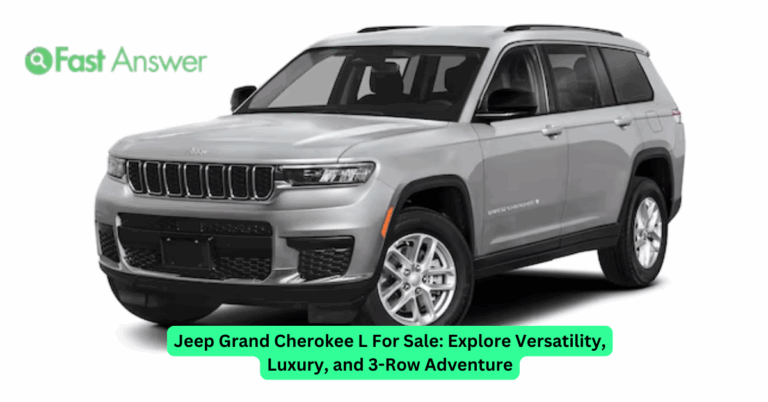How To Choose The Right Motorcycle Helmet
Ever wondered how the right helmet could be the difference between a near miss and a catastrophic accident? Choosing the right motorcycle helmet is not just about comfort; it’s also about maximizing safety. It’s fascinating to think that the evolution of the motorcycle helmet has saved countless lives since its inception in the early 20th century, even before it became a mandatory requirement in many countries.
Expert riders know that a helmet’s fit is crucial—it should be snug but not overly tight, ensuring it stays in place during a crash. Helmets today come with advanced features like Bluetooth connectivity, anti-fog visors, and improved ventilation systems, blending comfort with technology. Statistically, a well-fitted and high-quality helmet can reduce the risk of head injury by up to 85%, making it an essential piece of gear for every rider.
- Identify the helmet type that suits your riding style (full-face, modular, open-face).
- Verify safety certifications like DOT or Snell for reliable protection.
- Measure your head for accurate sizing and fit.
- Select appropriate visor options for visibility and weather conditions.
- Prioritize comfort features such as padding and ventilation.

How to choose the right motorcycle helmet
Choosing the right motorcycle helmet is crucial for safety while riding. Start by considering the different types of helmets available, like full-face, modular, or open-face, each offering varying levels of protection. Full-face helmets cover the entire head, providing the best protection, while open-face models leave the face exposed. Besides safety, helmets also differ in style, which can complement your riding preference and personality. It’s important to select a helmet that matches both your safety needs and aesthetic desires.
Safety certifications are key when picking a helmet. Look for standards like DOT (Department of Transportation) and Snell, which indicate that the helmet has passed rigorous safety tests. These certifications ensure the helmet can withstand impacts, reducing the risk of injury during a crash. In a table, compare features and certifications of different helmet brands to make an informed choice. This step is essential in narrowing down safe and reliable helmets.
The right fit can make all the difference in helmet safety and comfort. Use a measuring tape to find the circumference of your head, usually an inch above your eyebrows. Compare this measurement with the sizing chart of the helmet brand you’re considering. A well-fitting helmet should be snug, not overly tight, and should not move around when you shake your head. Remember, a helmet that fits poorly won’t protect you properly.
Consider extra features like visors and ventilation, especially if you ride long distances. A good visor protects your eyes from debris and sunlight, while adjustable vents can prevent overheating. Some helmets include features like Bluetooth compatibility for communication. Use a list to jot down these features, balancing your preferences with the basic safety needs. Ultimately, your helmet should make your riding experience both safe and enjoyable.
Step 1: Understand the different types of helmets available
Motorcycle helmets come in various styles, each designed for specific riding needs. Full-face helmets offer complete protection, covering the entire head and face. They’re a popular choice for sport and street riders. These helmets often include features like ventilation systems and anti-fog visors. Because of their full coverage, they’re known for providing the best protection.
Modular helmets, sometimes called flip-up helmets, offer flexibility. They combine the best of full-face and open-face helmets. The front section can be lifted, allowing easy access to your face without removing the helmet completely. This makes them a favorite for tour riders who like to take frequent breaks. However, they can be heavier than other types due to their added mechanisms.
Open-face helmets, also known as 3/4 helmets, cover the top, back, and sides of your head but leave your face open. They are often chosen by scooter and cruiser riders who prefer wind against their face. This style is lighter and usually less expensive. Unfortunately, they offer less protection for the face compared to full-face models. Riders often wear sunglasses or goggles for eye protection.
There are also half helmets, which cover the top of the head but nothing else. These are common among vintage or classic riders who prioritize style over safety. However, they provide the least protection of all types. Use a list to compare the pros and cons of each helmet type. This will help in making an informed choice based on safety and style preferences.
Step 2: Check for safety certifications
Safety certifications are essential when choosing a motorcycle helmet. They ensure the helmet has passed strict testing for impact resistance and other safety features. Look for certifications like DOT (Department of Transportation) in the United States, which is mandatory for all helmets sold there. Another is the ECE (Economic Commission for Europe) certification, common in European countries. These labels reassure you that the helmet meets rigorous safety standards.
The Snell Memorial Foundation also provides a widely respected certification. This organization’s tests are even more rigorous than DOT and ECE standards. Snell-certified helmets undergo additional impact tests to evaluate their effectiveness in crash scenarios. Many professional racers prefer helmets with this certification for maximum protection. Knowing these certifications can guide you to safer helmet choices.
When shopping, check for these labels on the helmet or its packaging. Manufacturers often proudly display them on their products. If you’re unsure about the authenticity of a certification, visit the organization’s website for more details. Some brands may carry both DOT and Snell certifications, providing extra peace of mind. A table comparing different certification attributes can help in evaluating helmet options.
Aside from checking for certifications, inspect the helmet for quality and construction. Even certified helmets need careful assessment to ensure they suit your needs. Check the shell material, padding thickness, and overall build. These factors contribute to your safety while riding. Ensure your helmet not only looks good but also provides reliable security.
Step 3: Measure your head properly
Ensuring a proper helmet fit starts with measuring your head accurately. Use a flexible tape measure for the best results. Wrap it around your head just above your eyebrows, capturing the largest part of your skull. Make sure the tape is snug but not too tight. Note the measurement in centimeters for greater precision.
Once you have your measurement, compare it with the helmet’s sizing chart. Different brands might have slight variations in sizing. For example, a medium in one brand might match a small in another. Use a table to organize and compare different brands and sizes effortlessly. This helps in finding your perfect fit across various options.
It’s crucial to try the helmet on even after measuring, as shapes vary. Some helmets are oval-shaped, while others might be round. Place the helmet on and fasten the chin strap properly. The helmet should feel snug all around without pinching. If it moves easily or feels loose, try a smaller size.
Check comfort after wearing the helmet for several minutes. Notice if there are any pressure points or discomfort. A comfortable fit is critical for long rides and safety. Helmets should not cause headaches or leave marks on your head. A good fit enhances riding enjoyment and protects you better in case of accidents.
Consider specific features like padding and adjustable straps when fitting the helmet. Some helmets come with removable liners, which can adjust slightly to suit your needs. Test different models to see which features benefit you the most. Helmets with adjustable features offer flexibility and comfort. Remember, the perfect fit combines size, shape, and personal comfort.
Step 4: Consider visor options for visibility
Choosing the right visor for your motorcycle helmet can greatly influence your riding experience. Visors protect your eyes from wind, debris, and harmful UV rays. They come in different tints, such as clear, tinted, and mirrored. Clear visors are ideal for night rides, ensuring maximum visibility. Tinted and mirrored visors are great for day use, reducing glare from the sun.
Some visors have anti-fog coatings, preventing them from misting up in cold or humid weather. This feature is especially useful for early morning or winter rides. Look for helmets with removable visors, so you can change them based on the time of day or weather. Note that some visors might require specific cleaning solutions to maintain their clarity and effectiveness. This ensures the visor remains scratch-free and clear.
Another important aspect is the visor’s compatibility with helmet models. Not all visors fit every helmet, so check the manufacturer’s guide before purchasing. Quick-release mechanisms in some helmets make visor changes easy and fast. This feature can be handy when switching from a day to a night visor. Also, consider visors with a wider field of vision for better peripheral sight.
For those who wear glasses, consider helmets with visors designed for eyeglass wearers. These visors offer extra space to accommodate frames without pressure. Some helmets even feature internal sun visors that can be flipped down when needed. This versatility provides protection from bright sunlight in an instant. Utilizing such features adds to comfort and convenience.
Having a visor with tear-off posts is beneficial for dirt biking or track racing. These posts allow for quick removal of tear-off sheets when they get muddy or dirty. This keeps your vision clear while riding in challenging conditions. A list of visor features can help you determine what’s most important for your needs. Focus on both durability and functionality when selecting a visor.
Step 5: Look for comfort and additional features
When choosing a motorcycle helmet, comfort is just as critical as safety. A comfortable helmet makes the difference during long rides. Look for helmets with plush interior padding that conforms to your head shape. Removable and washable liners can help maintain freshness over time. Also, consider helmets that offer excellent ventilation to keep cool.
Additional features can enhance your riding experience. For instance, Bluetooth connectivity allows you to take calls or listen to music while riding. Some helmets come with built-in communication systems for group rides. Others have integrated GPS, which is helpful for navigation. These features add convenience without compromising safety.
Check for weight distribution in the helmet, as a balanced helmet reduces neck strain. Lightweight helmets often use advanced materials like carbon fiber or fiberglass. These materials provide strong protection without adding bulk. A table comparing helmet weights can help you identify lighter options. Proper weight distribution also ensures better aerodynamics.
Noise reduction is another factor to consider. Helmets with wind seals reduce annoying wind noise, making rides quieter and more enjoyable. This is especially important for those who frequently travel on highways. Testing helmets for noise levels can enhance the riding experience significantly. Pairing this with ear protection ensures maximum comfort.
Evaluate helmets for features like quick-release chin buckles and adjustable straps. These allow for easy on-and-off and ensure a snug fit. Some helmets also offer features like sunshields or fog-resistant visors. Create a list of desired features, prioritizing what matters most to you. Balancing comfort and additional features leads to better riding satisfaction.
Evaluating helmet fit and comfort
The fit of a motorcycle helmet is crucial for both safety and comfort. A good fit ensures the helmet stays secure on your head during a ride, providing protection in case of an accident. To check the fit, put the helmet on and fasten the chin strap. Shake your head slightly; the helmet should move with you but not slide around. If it moves too much, try a different size or brand.
Comfort should not be compromised when choosing a helmet, especially for long rides. Look inside for soft, cushioning padding that molds to your head shape. Some helmets offer removable pads that can be washed to maintain hygiene. Also consider ventilation features, which help keep your head cool in warm weather. A list of important comfort features might include padding type, ventilation systems, and liner materials.
Each person’s head shape is unique—round, oval, or somewhere in between—which affects how a helmet fits. Helmets are designed in different shapes to accommodate these variations. Trying on several models can help you find one that snugly fits your particular shape without pressure points or discomfort. Use this time to adjust straps and pads for the best possible fit.
Weight also plays a part in deciding on a comfortable helmet. Heavier helmets can cause neck fatigue and discomfort over time. Lightweight materials like carbon fiber provide strong protection while keeping weight down. Compare weights using a table if considering multiple options at once. The lightest option with appropriate protection should ideally be preferred.
Involve yourself in personal testing to identify noise levels as well—it impacts comfort during rides significantly. Wind noise disrupts concentration and may lead to headaches after prolonged exposure at high speeds; thus selecting quieter designs matters greatly when assessing worthiness overall! Exploring additional solutions such as ear plugs could further enhance overall satisfaction experienced daily out there adventuring afar every week!
Reading user reviews and expert ratings
When choosing the right motorcycle helmet, user reviews and expert ratings are invaluable tools. User reviews provide real-world experiences from other riders, highlighting practical pros and cons. These reviews often cover aspects like comfort over long rides, actual fit, and the helmet’s durability over time. Comparing multiple reviews can give you a clearer picture of the helmet’s performance. This helps you make a more informed decision based on collective feedback.
Expert ratings add another layer of trust, as they are usually based on comprehensive testing and analysis. Experts often evaluate helmets on various criteria such as safety, material quality, and aerodynamics. They usually include detailed reports, offering insights into how well a helmet performs under different conditions. Check respected sources like motorcycle magazines and safety organizations for these ratings. Combining user reviews with expert ratings gives a balanced view.
Use online platforms such as forums and e-commerce sites for accessing a broad range of user reviews. These platforms often have rating systems, visual aids, and filters to make comparison easier. You can find lists of top-rated helmets according to user satisfaction. Pay attention to common themes in the reviews, such as frequently mentioned benefits or problems. This helps in identifying the most reliable models.
Sometimes, manufacturers’ websites feature testimonials and reviews. While these can be useful, remember they might be selectively positive. Cross-reference with third-party sites to validate the information. Paying attention to reviews by riders with similar needs and preferences to your own can be particularly helpful. This specific feedback can guide you toward helmets that best match your requirements.
Creating a table to compare key points from reviews and ratings can simplify your decision-making. Track elements like safety, comfort, price, and additional features. This visual aid helps you weigh different aspects effectively. Ultimately, the combination of user feedback and expert opinions ensures you choose a helmet that is both trustworthy and suitable for your riding style.
Where to buy quality motorcycle helmets
Finding the right place to buy a quality motorcycle helmet is key to ensuring safety and comfort. There are various options available, from local motorcycle shops to online marketplaces. Each choice has its benefits, depending on your preferences. Local shops allow you to try helmets on for size, giving a direct sense of fit. This hands-on experience can be crucial for first-time buyers.
Online stores offer a wider range of brands and models, often at competitive prices. Websites like Amazon and RevZilla provide customer reviews, aiding in decisions based on user experiences. Online platforms usually have return policies, enabling you to exchange helmets if they don’t fit right. Some sites even offer virtual fitting technology for a better shopping experience. These conveniences make online shopping an attractive option for many riders.
Motorcycle trade shows provide another unique opportunity to explore quality helmets. They often showcase the latest models and innovations, giving you a chance to compare different brands side by side. Additionally, you might find exclusive deals or discounts at these events. Talking directly with manufacturers and experts can offer valuable insights. It’s a great way to access firsthand information and product demonstrations.
Consider checking big retail chains known for automotive gear as well. Stores like Cycle Gear or big department stores sometimes carry a selection of helmets. They may not offer as extensive a variety as specialized shops but can be convenient for testing a few models. You might also come across seasonal discounts and promotions. This might be helpful if you’re shopping with a budget in mind.
Using a table to list various places along with their pros and cons can simplify your search for the best helmet-buying option. Factors like price range, brand availability, and purchase flexibility could be key points in your table. This organized approach helps in comparing different buying sources. Finally, choose a vendor that aligns with your needs, ensuring confidence and satisfaction with your purchase.
Helmet maintenance and care tips
Taking good care of your motorcycle helmet is important for safety and durability. Start by cleaning the exterior regularly to keep it looking new. Use a soft cloth with mild soap and water; harsh chemicals can damage the surface. Avoid scrubbing too hard, as this might scratch the shell. Lightly wash and rinse, then let it air dry to avoid moisture buildup.
The interior padding can accumulate sweat and odors, so it needs attention too. Many helmets have removable liners, which should be washed periodically. Check the care instructions on the label for best practices. If the liner isn’t removable, use a soft cloth to clean it gently. Keeping the interior fresh ensures comfort and hygiene.
Store your helmet in a clean, dry place when not in use. Avoid placing it near direct sunlight or extreme heat, as this can weaken the materials over time. Using a helmet bag or cover can prevent dust and accidental scratches. A table with storage tips can help you find suitable places for your helmet. Proper storage prolongs the life of your helmet.
Regularly inspect your helmet for signs of wear or damage. Check the straps, buckles, and lining for any tears or fraying. If you notice cracks or serious damage to the shell, it may be time to replace the helmet. User manuals often include guidelines for such inspections. Being proactive about maintenance enhances your helmet’s effectiveness.
If your helmet falls hard, even if it seems fine, it might be compromised. Replacing it after a major impact is a good idea, as unseen damage can affect its safety. Write down the date of purchase and keep a note of any incidents. Keeping track of its history helps determine when it’s time for a new helmet. This attention to care ensures you always have reliable protection on the road.
Frequently Asked Questions
Exploring commonly asked questions about motorcycle helmets can offer clarity on selecting the best one. These insights help in understanding essential features and maintenance tips for optimal safety and comfort.
1. What are the different types of motorcycle helmets?
Motorcycle helmets come in various types, such as full-face, open-face, and modular. Full-face helmets provide maximum protection, covering both the head and the face. They’re ideal for high-speed rides and offer the best safety.
Open-face helmets cover the head but leave the face exposed, offering less protection. Modular helmets are a mix between full-face and open-face, allowing the chin bar to be flipped up. Each type serves different rider needs and preferences.
2. How important are safety certifications in motorcycle helmets?
Safety certifications are crucial when choosing a motorcycle helmet because they ensure the helmet has passed rigorous testing. Certifications like DOT, ECE, and Snell indicate the helmet’s ability to withstand impacts and protect the rider in accidents.
Understanding these standards helps riders choose helmets that meet or exceed safety expectations. Helmets without certifications are generally not recommended, as their protective quality cannot be guaranteed in critical situations.
3. How can I ensure a motorcycle helmet fits correctly?
Ensuring a proper helmet fit involves measuring the circumference of your head and choosing a helmet size that matches those measurements. The helmet should fit snugly, with no movement when you shake your head.
Try the helmet on before purchase and wear it for a few minutes to check for comfort. A helmet that fits well will enhance both safety and comfort, making long rides much more enjoyable.
4. What should I look for in a motorcycle helmet visor?
A good motorcycle helmet visor should offer clear visibility, protection from debris, and reduce glare. Options such as clear, tinted, or mirrored visors cater to different lighting and weather conditions. An anti-fog coating is ideal for minimizing mist during cold rides.
Check if the visor is easily replaceable for flexibility in changing conditions. Many visors also come with UV protection, which is beneficial for sunny days. Choosing the right visor ensures a safer and more comfortable riding experience.
5. How do I maintain and care for my motorcycle helmet?
Maintaining a motorcycle helmet involves regular cleaning of both the exterior shell and interior padding. Use a mild soap and water solution to gently clean the helmet’s surface and avoid harsh chemicals that can damage it.
The interior padding can often be removed and washed, keeping it fresh. Regularly inspect the helmet for damage or wear, and store it properly in a cool, dry place to extend its lifespan. Following these care tips ensures the helmet remains effective and comfortable.
Final Thoughts
Choosing the right motorcycle helmet is an essential step in ensuring safety on the road. By understanding the diverse types and assessing safety certifications, riders can make informed decisions. Prioritizing fit and comfort enhances the riding experience, making long journeys enjoyable and secure. These considerations lay the groundwork for optimal protection.
Maintaining your helmet through regular cleaning and proper storage prolongs its effectiveness. Reading user reviews and expert ratings offers valuable insights, helping to select the best helmet for individual needs. Every rider deserves a helmet that not only meets safety requirements but also complements their personal style. Invest wisely for peace of mind and unmatched protection.


